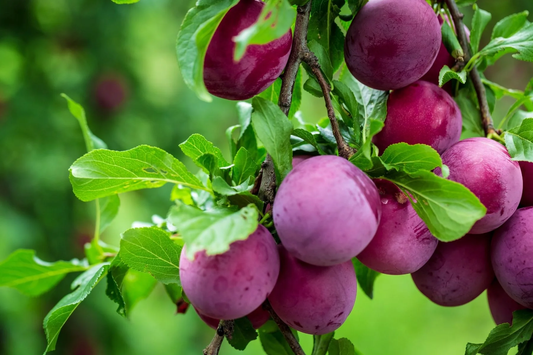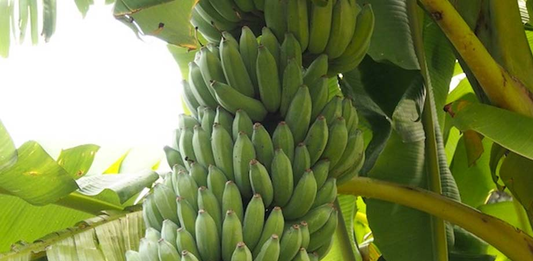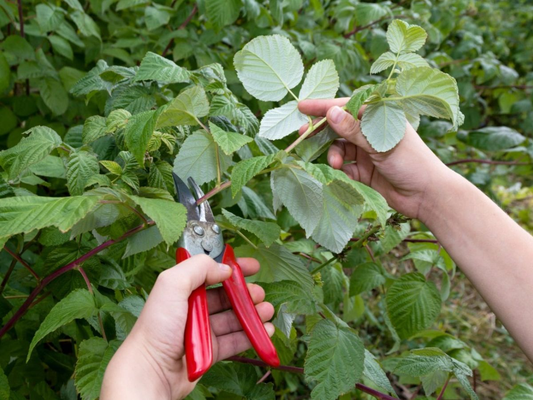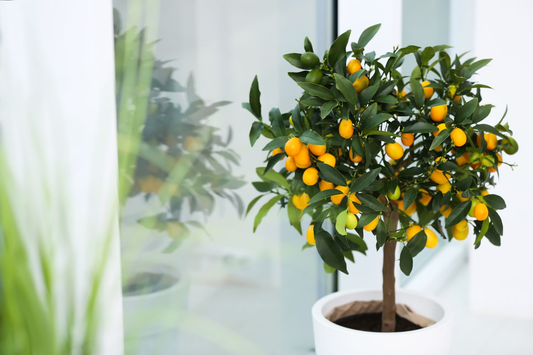How to Start a Herb Garden in Containers – Perfect for City Dwellers and Small Spaces!
Share
Table of Contents
1. Introduction
Starting a herb garden in containers is a perfect solution for urban dwellers or anyone limited by space. Whether you live in a city apartment with just a windowsill or have a small balcony or patio, container gardening makes growing fresh herbs accessible and easy. With a few basic supplies, you can create a lush and aromatic mini-garden that not only adds greenery to your home but also provides fresh, flavorful herbs to elevate your cooking.
Container herb gardening is particularly appealing because:
- It requires minimal space and can fit into almost any small area, including windowsills, balconies, or kitchen counters.
- It offers year-round growth potential, meaning fresh herbs are always within reach, no matter the season.
- Containers give you full control over each plant’s environment, allowing you to adjust soil, water, and sunlight to match the needs of different herbs.
The benefits of starting a herb garden in containers include:
- Convenience: Having fresh herbs at your fingertips can simplify cooking and reduce trips to the store.
- Accessibility: Since herbs are grown in containers, they can be moved easily to follow the sun or be brought indoors during colder months.
- Satisfaction: Growing your own herbs provides a sense of accomplishment and allows you to enjoy the freshest, most flavorful ingredients.
With container herb gardening, you have the flexibility to start small and expand over time, adding new herbs to suit your culinary preferences. As you learn more about each herb’s needs, your garden can become a tailored collection of fresh flavors, perfect for enhancing any dish. Starting a herb garden in containers is not just for those with green thumbs; it’s an enjoyable and rewarding hobby that anyone can master with a little patience and care.

2. Benefits of Starting a Herb Garden in Containers
Growing a herb garden in containers offers a range of benefits, especially for those with limited space or in urban areas. From maximizing flavor in your dishes to the ease of accessible gardening, container herb gardens can transform how you use and enjoy herbs in your everyday life.
-
Freshness and Flavor:
- Nothing compares to the flavor of fresh-picked herbs; they have a stronger, richer aroma and taste than store-bought dried options.
- Fresh herbs add a vibrant taste to dishes, bringing out natural flavors that can make any recipe stand out.
- In beverages, freshly harvested herbs like mint, basil, and rosemary add unique, aromatic notes that elevate your drinks.
-
Convenience and Accessibility:
- Container herb gardens can be placed in easy-to-reach spots like kitchen windows, patios, or balconies, making it effortless to pick fresh herbs whenever needed.
- Growing herbs just steps away from your cooking area means that you can add them fresh to your recipes, maximizing both flavor and nutritional value.
- This accessibility also encourages frequent use, reducing waste and the need to buy small amounts of herbs that spoil quickly.
-
Space Efficiency:
- For city dwellers or those with no outdoor garden, container gardening is an ideal solution. Containers fit easily into small spaces, from window sills to shelves.
- Vertical gardening with containers can save even more space, allowing you to grow a variety of herbs without needing extensive square footage.
- Containers can also be moved around to make the most of available light, unlike fixed in-ground gardens.
-
Control Over Growing Conditions:
- Growing herbs in containers allows for better control over soil quality, as you can choose the right potting mix that suits each plant's needs.
- Containers make it easier to monitor and adjust water levels, which is especially important for herbs that are sensitive to overwatering.
- You can move containers to optimize sunlight exposure, ensuring each herb receives the right amount of light for healthy growth.
3. Choosing the Right Containers
Selecting the right containers is a key factor in successfully growing a herb garden. Containers affect everything from the herb’s root growth to moisture retention and portability. Here’s what you need to consider when choosing containers for your herbs:
- Container Materials: Different materials offer distinct advantages and drawbacks. Here’s a comparison to help you choose the best type for your needs.
| Material | Pros | Cons |
|---|---|---|
| Ceramic |
|
|
| Plastic |
|
|
| Terracotta |
|
|
| Metal |
|
|
-
Drainage: Proper drainage is essential for healthy herbs. Without adequate drainage, water can accumulate at the bottom, leading to root rot. Make sure your containers have:
- Drainage holes at the base, or drill them if needed.
- Trays or saucers to catch excess water, especially if indoors.
-
Size and Depth: Different herbs have different root depth requirements. Here are some general recommendations:
- Basil, Parsley, and Mint: These herbs benefit from larger, deeper containers (10–12 inches deep) to support their extensive root systems.
- Thyme, Oregano, and Chives: Smaller herbs that can thrive in shallow containers (6–8 inches deep).
- Rosemary and Sage: These perennials need more space and do best in containers at least 12 inches deep.
- Portability: If you’re placing your containers outdoors, choose lightweight materials like plastic or smaller pots for easy mobility. This allows you to move them to optimal sunlight throughout the seasons.

4. Selecting the Best Herbs for Container Gardens
Choosing the right herbs is essential for creating a thriving container garden tailored to your tastes and needs. Whether you’re looking to enhance your cooking, explore natural remedies, or enjoy fragrant foliage, there are herbs suited to every purpose. Here’s a guide to help you pick the best options for your container herb garden.
-
Culinary Herbs: Popular for cooking, these herbs add fresh flavors to a wide range of dishes.
- Basil: Known for its sweet, slightly spicy flavor, basil is a staple in Italian and Asian cuisine. It pairs well with tomatoes, pasta, and salads.
- Parsley: Mild and slightly peppery, parsley is versatile, adding freshness to soups, sauces, and salads.
- Chives: With a subtle onion flavor, chives are perfect for garnishing potatoes, eggs, and soups.
- Thyme: Earthy and aromatic, thyme is excellent for savory dishes like roasted meats, vegetables, and stews.
-
Medicinal Herbs: These herbs have traditional uses in natural remedies, providing soothing and calming effects.
- Peppermint: Known for its digestive benefits, peppermint is refreshing in teas and can help alleviate stomach discomfort.
- Lavender: Famous for its relaxing properties, lavender is often used to promote sleep and reduce stress.
- Chamomile: Soothing and calming, chamomile is commonly used in teas to help with relaxation and better sleep.
-
Aromatic Herbs: These herbs provide delightful fragrances and can naturally repel pests.
- Rosemary: Strong, pine-like aroma with culinary uses, especially for meats and potatoes.
- Mint: Refreshing scent and taste; excellent for teas, desserts, and as a natural mosquito repellent.
- Oregano: Distinctly spicy and earthy, oregano is a common ingredient in Italian and Mediterranean cooking, also deterring certain pests.
| Herb | Sunlight Requirements | Water Needs | Ideal Container Size |
|---|---|---|---|
| Basil | Full Sun | Moderate | 10–12 inches deep |
| Parsley | Partial to Full Sun | Moderate | 8–10 inches deep |
| Chives | Full Sun | Moderate | 6–8 inches deep |
| Thyme | Full Sun | Low | 6–8 inches deep |
| Peppermint | Partial Sun | High | 10–12 inches deep |
| Lavender | Full Sun | Low | 10–12 inches deep |
| Chamomile | Partial Sun | Moderate | 8–10 inches deep |
| Rosemary | Full Sun | Low | 12 inches deep |
| Mint | Partial to Full Sun | High | 10–12 inches deep |
| Oregano | Full Sun | Low | 8–10 inches deep |
-
Tips for Choosing Herbs: When selecting herbs, consider the following:
- Think about your cooking habits: Choose herbs you frequently use to make the most of your garden.
- Assess your climate: Some herbs, like basil, need more warmth and sunlight, while others like mint are more tolerant of partial shade.
- Factor in your available space: If space is limited, consider compact or dwarf varieties of your favorite herbs.
5. Soil and Fertilizer Requirements for Container Herb Gardens
Choosing the right soil and fertilizers is essential for a healthy container herb garden. The right soil mixture ensures that your herbs have access to nutrients and proper drainage, while appropriate fertilization promotes strong, flavorful growth.
-
Soil Mixture: For container herbs, a high-quality potting mix is ideal because it offers better drainage and nutrient balance compared to typical garden soil.
- Use a light, well-draining potting mix specifically formulated for containers, as garden soil may retain too much moisture and become compacted in pots.
- Look for mixes with added organic matter like compost, which helps retain moisture without waterlogging.
-
Fertilizer: Herbs benefit from regular but moderate feeding. Here are some recommendations for organic options:
- Consider using organic compost or liquid seaweed fertilizers, which provide a steady supply of nutrients without overwhelming the plants.
- Apply liquid fertilizer every 4-6 weeks during the growing season to avoid nutrient buildup in the container.
- Herbs like basil and parsley, which are heavier feeders, may require slightly more frequent applications.
-
Soil Amendments: Adding certain materials can further improve the drainage and structure of your potting mix.
- Perlite: A lightweight volcanic rock that helps aerate the soil and improve drainage, preventing root rot.
- Vermiculite: A mineral that increases moisture retention and provides a buffer for nutrients, ideal for herbs that require more water.

6. Light Requirements for Container Herb Gardens
Light is one of the most crucial factors for growing healthy herbs in containers. While some herbs are quite adaptable, most thrive with ample sunlight. Understanding the light requirements for your chosen herbs will help ensure that they grow vigorously and produce flavorful leaves.
-
Sunlight Needs: Most herbs require at least 6 hours of direct sunlight each day to thrive. Here’s a quick guide for popular herbs:
- Basil, rosemary, and thyme: Full sun (6–8 hours per day).
- Mint and parsley: Partial shade to full sun, but they tolerate slightly less direct light (4–6 hours).
- Chives and oregano: Prefer full sun but can manage with slightly less in low-light settings.
-
Artificial Lighting: If you’re growing herbs in an indoor or low-light space, consider using artificial grow lights.
- LED grow lights: These are energy-efficient, offer full-spectrum lighting, and are ideal for indoor herbs.
- Setting up grow lights: Position the light 6–12 inches above the herbs and keep it on for 10–12 hours daily to mimic natural sunlight.
- Ensure that the lights are adjustable to accommodate the growth of your herbs.
-
Positioning Your Herbs: Proper placement ensures that your herbs get optimal light exposure.
- Outdoors: Place containers in a sunny spot, such as a patio, balcony, or garden area where they receive adequate sunlight.
- Indoors: Place containers on south or west-facing windowsills, which receive the most sunlight. Rotate containers occasionally to ensure even growth.
7. Watering and Care Tips for Container Herb Gardens
Proper watering and maintenance are essential for keeping container herbs healthy and productive. Since container plants tend to dry out more quickly than those planted in the ground, it’s important to monitor soil moisture levels and follow best practices for care.
-
Watering Frequency: Container herbs usually require more frequent watering due to faster soil drying.
- Check soil moisture regularly by inserting your finger about an inch deep into the soil. If it feels dry, it’s time to water.
- Aim to keep the soil consistently moist but not soggy. Overwatering can lead to root rot, so allow excess water to drain completely.
- During hot weather, herbs may need watering once a day, while cooler seasons may require watering only every few days.
-
Self-Watering Containers: These containers are a great solution for busy gardeners or those who struggle with consistent watering.
- Self-watering containers have a built-in reservoir that supplies water as needed, keeping soil moisture levels steady.
- They help reduce the risk of over- or under-watering, making them ideal for herbs that prefer consistent moisture, like parsley and chives.
- These containers are particularly helpful for sunny spots or during hot summer months.
-
Pruning and Harvesting: Regular pruning and harvesting encourage bushier growth and help prevent herbs from becoming leggy.
- For herbs like basil, pinch back the top leaves regularly to encourage a fuller shape. Harvest just above a leaf pair for best results.
- With woody herbs like rosemary and thyme, snip off small amounts as needed, being careful not to remove more than a third of the plant at once.
- Avoid over-pruning, especially for younger plants, as they need sufficient foliage to support growth.

8. Common Challenges in Container Herb Gardening
Growing herbs in containers can be highly rewarding, but it also comes with a few challenges. Understanding and addressing these common issues will help keep your container herb garden thriving throughout the seasons.
-
Overwatering and Underwatering: Proper watering is crucial, but finding the right balance can be tricky.
- Signs of Overwatering: Yellowing leaves, soggy soil, and wilting can indicate too much water.
- Signs of Underwatering: Dry, brittle leaves and wilted stems often indicate a lack of water.
- Solution: Always check soil moisture before watering. Allow excess water to drain, and aim to keep the soil moist but not waterlogged.
-
Pests: Container herbs can attract pests like aphids, spider mites, and whiteflies, which can harm plants if left unchecked.
- Companion Planting: Plant herbs like rosemary or mint near more vulnerable plants, as their strong scents help repel pests.
- Neem Oil: A natural and effective pesticide; dilute and spray it on affected areas to deter pests.
- Manual Removal: Check your plants regularly and remove any pests by hand or wash them off with water.
-
Temperature Extremes: Container herbs are more susceptible to temperature changes since pots heat up or cool down faster than garden soil.
- During hot summer days, move containers to a partially shaded spot to prevent wilting.
- In colder weather, bring herbs indoors or insulate pots with burlap to protect them from frost.
-
Nutrient Deficiency: Containers often lack essential nutrients due to limited soil volume, leading to deficiencies.
- Signs of Deficiency: Yellowing leaves, stunted growth, and poor harvests are common indicators.
- Solution: Apply a balanced, organic fertilizer every 4–6 weeks to replenish nutrients.
| Challenge | Symptoms | Solution |
|---|---|---|
| Overwatering | Yellowing leaves, soggy soil | Allow soil to dry slightly and ensure proper drainage |
| Underwatering | Dry, brittle leaves | Water thoroughly when top inch of soil is dry |
| Pests | Visible insects or leaf damage | Use neem oil spray or companion planting |
| Temperature Extremes | Wilting or frost damage | Move containers indoors or to shaded areas |
| Nutrient Deficiency | Yellow leaves, slow growth | Apply balanced organic fertilizer every few weeks |
By recognizing these common challenges and knowing how to address them, you can prevent most issues and maintain a healthy, productive container herb garden.
9. How to Arrange and Display Your Container Herb Garden
Arranging and displaying your container herb garden can be as fun as it is functional. With a bit of creativity, you can design a visually pleasing setup that keeps herbs within easy reach and maximizes your available space.
-
Grouping by Needs: For healthier plants, group herbs that have similar light and water requirements together.
- Herbs that thrive in full sun, like rosemary and thyme, can be placed together in sunny spots.
- Shade-tolerant herbs, such as mint and parsley, work well in shadier areas.
- Keep moisture-loving herbs like basil and cilantro close by to make frequent watering easier.
-
Vertical Gardens: Maximize space by using vertical planters or shelves.
- Vertical planters or stacked shelves are ideal for small patios, balconies, or even indoor spaces.
- Hanging planters or wall-mounted pots can turn any wall into a mini herb garden.
-
Design Ideas: Incorporate your herbs into your living space with thoughtful arrangements.
- Arrange pots on a windowsill in the kitchen for easy access while cooking.
- On a balcony, line up pots along a railing or place them in decorative containers to create a green oasis.
- Use color-coordinated pots or labels to add style and personality to your setup.

10. Seasonal Care Tips for Container Herbs
Proper seasonal care is essential to ensure your container herbs thrive throughout the year, regardless of the weather conditions.
-
Winterizing Your Herb Garden: As temperatures drop, container herbs become more vulnerable to the cold. Here’s how to protect them:
- Bring indoor-friendly herbs like basil, parsley, and thyme inside to avoid frost damage.
- For outdoor herbs, insulate pots with burlap or bubble wrap to protect them from freezing temperatures.
- Move containers to sheltered spots, like near the house, or use a cold frame to shield them from harsh winds.
-
Summer Care: During the hot summer months, herbs in containers may require extra attention:
- Water frequently, as containers tend to dry out faster in the heat.
- Provide afternoon shade for heat-sensitive herbs like basil and cilantro to prevent wilting or sunburn.
- Regularly check for pests, as warmer temperatures can attract insects.
-
Annuals vs. Perennials: Not all herbs are created equal when it comes to longevity.
- Annual Herbs: Herbs like basil, cilantro, and dill are typically replanted each year.
- Perennial Herbs: Varieties like rosemary, thyme, and mint can survive multiple seasons with proper care, returning year after year.
11. Cost-Effective Tips for Starting a Container Herb Garden
Starting a container herb garden doesn’t have to break the bank. With a little creativity and resourcefulness, you can grow your own fresh herbs without spending much.
-
Repurpose Containers: Instead of buying new pots, get creative by using household items.
- Old tin cans, mason jars, or even buckets make great planters. Just be sure to add drainage holes.
- Decorate or paint these repurposed containers to match your personal style.
-
DIY Fertilizers: You don’t need expensive fertilizers to nourish your herbs.
- Make your own compost tea by steeping compost in water for a few days, providing your herbs with essential nutrients.
- Crushed eggshells can also be sprinkled around the base of plants to add calcium and deter pests.
-
Propagating Herbs: Instead of buying new plants, save money by propagating herbs from cuttings.
- Herbs like basil, rosemary, and mint can easily be grown from stem cuttings in water or directly in soil.
- Growing your herbs from cuttings is a sustainable and cost-effective way to expand your garden.
12. FAQs - Frequently Asked Questions
Here are answers to some of the most common questions about growing herbs in containers:
-
1. Can any herb be grown in containers?
While most herbs can thrive in containers, some are better suited than others. Herbs like basil, thyme, parsley, and mint adapt well to container gardening due to their relatively shallow root systems. On the other hand, larger herbs like rosemary or oregano might need bigger pots to accommodate their root growth.
-
2. How often should I water my container herb garden?
The watering frequency depends on several factors: the type of herb, the size of the container, and the environmental conditions. For example, herbs like basil and cilantro prefer moist soil, while rosemary and thyme are more drought-tolerant. It's important to check the soil moisture regularly and water when the top inch of soil feels dry.
-
3. Do container herbs require special soil?
Yes, container herbs require a well-draining potting mix. Unlike garden soil, which can become compacted in containers, a good potting mix ensures that water flows freely and prevents root rot. Avoid using heavy garden soil that doesn't drain properly.
-
4. Can I grow a container herb garden indoors?
Yes, container herb gardens can thrive indoors if placed in well-lit windows that receive at least 6 hours of sunlight a day. For spaces with insufficient natural light, grow lights can provide the necessary illumination for healthy herb growth.
-
5. What are the easiest herbs to start with for beginners?
For beginners, herbs like basil, mint, and parsley are great choices. These herbs are easy to grow, require minimal care, and can quickly be incorporated into cooking or drinks.
-
6. How long will my herbs last in containers?
The lifespan of herbs in containers varies. Annual herbs like basil and cilantro complete their life cycle in one year and need to be replanted each season. Perennial herbs like rosemary, thyme, and mint can last for several years with proper care, returning each season if maintained well.
Additional Resources
Discover the Joy of Indoor Strawberry Farming: How to Grow Strawberrie – XRoci
Got Limited Space? Discover the Best Plants for Growing in Small Space – XRoci
10 Incredible Reasons You Should Buy Potted Fruit Plants Online Right – XRoci
6 Key Features to Look for in the Best Soil for Indoor Vegetable Garde – XRoci




